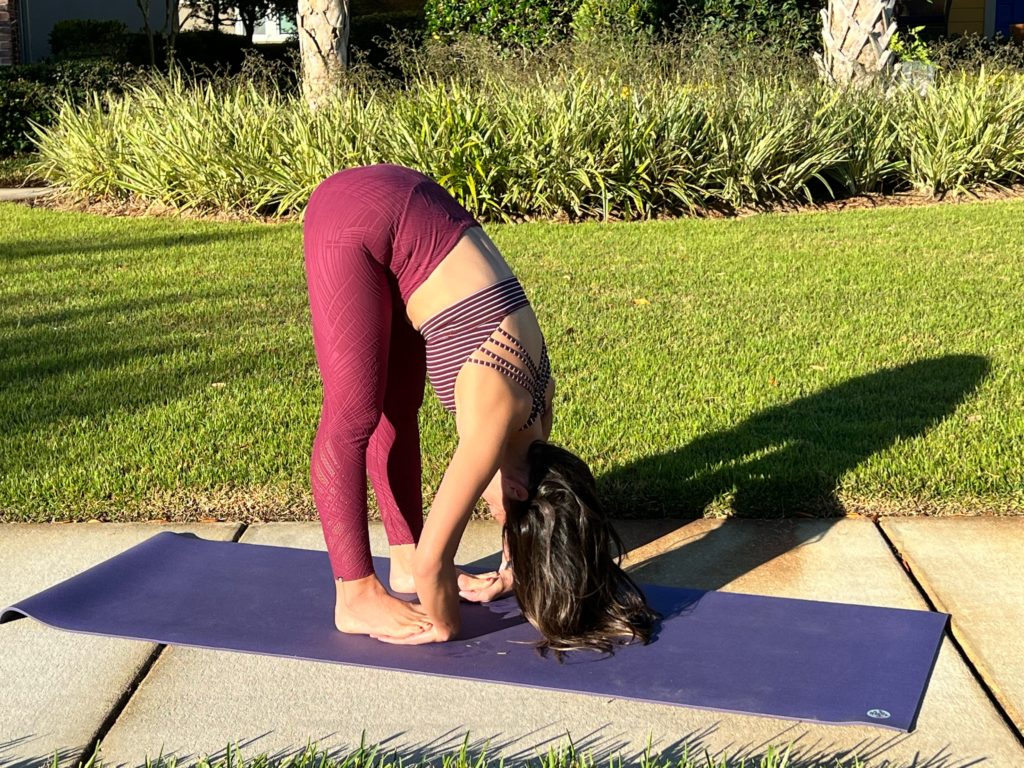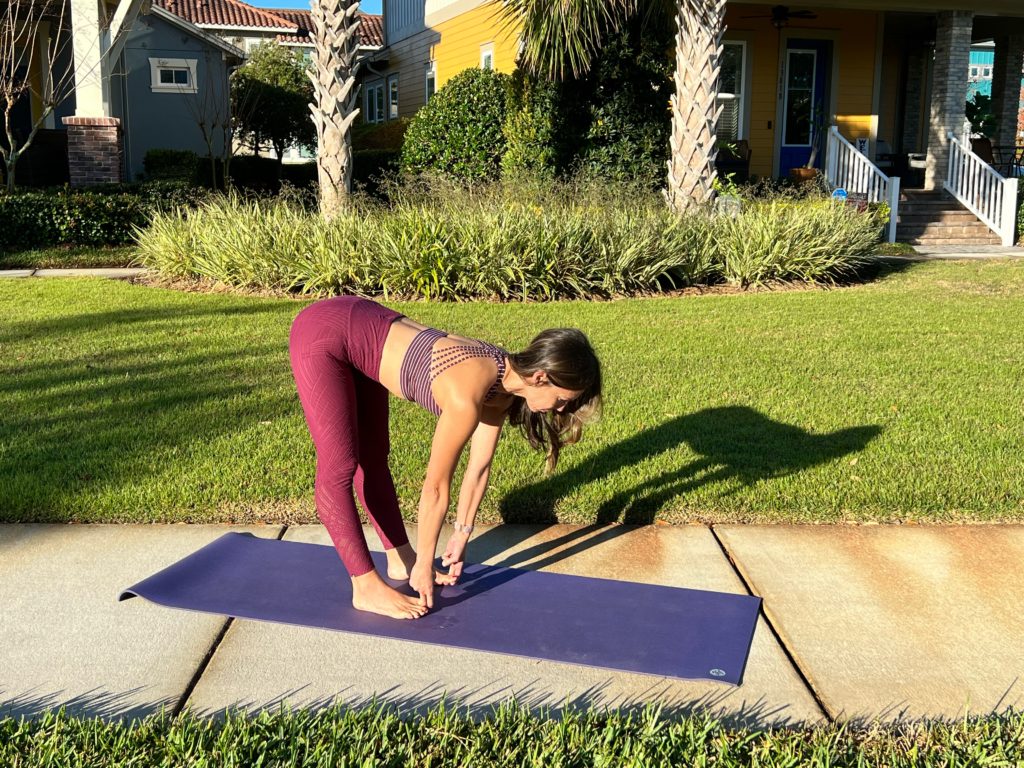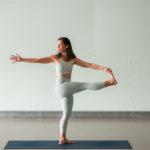Padangusthasana and Padahastasana
Your Monthly Yoga Pose
Our hands and feet are how we touch the world. Our hands feel the world while our feet feel the earth we walk upon. Connecting the two brings about a whole body circuit of energy.
A quick Sanskirt translation:“Pada” means foot, “angustha” means big toe, and “hasta” means hands. Hence, big-toe or hand-under-foot posture is a literal translation. Padangusthasana and padahastasana are deep forward folds. Both align the back body while hand-under-foot posture also prepares the hands and wrists for inversions and/or postures that require the hands as the base of the body. Both postures are quite similar and provide nearly the same benefits. Padahastasana is a more intense variation as it elevates the ball of the feet slightly, adding more length in the ankle and calf area.
Big-toe and hand-under-foot are postures that lengthen the spine, hamstrings, calf and ankle. The postures can appear to be intense, but several modifications are available to allow most bodies to achieve a variation of the postures.


Padangusthasana
- Begin standing with the feet one foot apart.
- As you exhale, bend forward and hold the big toes with the pointer and middle finger of the same hand. Some call this a “yogi-lock of the toes.”
- Keep the head lifted and feel as if the navel is coming toward the spine while stretching down the shoulders. The back should be straight or even attempting a slight extension.
- Stay lifted for two breaths.
- As you exhale, bring the head between the knees, lifting the tummy toward the back body and keeping the legs stiff.
- The elbows move away from the body as the shoulders move away from the ears.
- Maintain a normal breath for 20 seconds while holding the posture.
- As you inhale, return to the lifted head and release the toes. Exhale in this posture.
- Inhale to stand.


Padahastasana
- Begin standing with the feet one foot apart.
- As you exhale, bend forward and place the hands under the feet, palms up, so they are touching the soles of the feet.
- Keep the head lifted and feel as if the navel is coming toward the spine while stretching down the shoulders and keeping the legs straight. As in the previous posture, the back should be straight or even attempting a slight extension.
- Press the toes into the palms of the hands feeling the lengthening throughout the forearms.
- Stay lifted for two breaths.
- As you exhale, bring the head between the knees, lifting the tummy toward the back body and keeping the legs stiff.
- The elbows move away from the body as the shoulders move away from the ears.
- Maintain a normal breath for 20 seconds while holding the posture.
- As you inhale, return to the lifted head and spine and release the hands. Exhale in this posture.
- Inhale to stand.
Variations for the postures are the use of straps under the feet as well as keeping the knees bent so the top portion of the body still receives the benefits of the lengthening. As with all postures, listen to your body and move at your pace, remembering that consistent practice is the goal.
Namaste.


